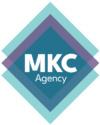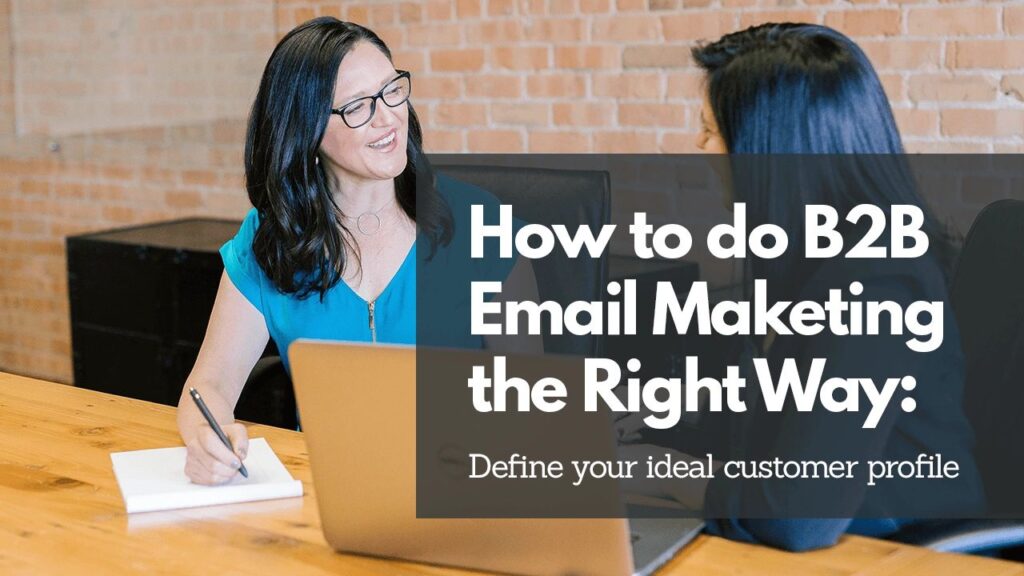How to do B2B Email Marketing the Right Way: Define your ideal customer profile
Are you an idealist? That might make life a minefield of unmet expectations for you, my dreamer friend, but there is value in having ideals!
Specifically, for your B2B business, taking the time to define your ideal customer can make all the difference in how you market to your audience. Having a clear idea of who they are will also clue you in on where they might be (and how to get their attention and, eventually, their business).
Your ideal customer profile should identify as someone who:
- needs and wants your product or service,
- will benefit most from your product or service, and
- has financial resources to pay for it.
This model for an ideal customer profile is much more practical and makes qualifying prospects easier. Most small businesses market to anyone and everyone. But casting such a broad net means you’re spending marketing dollars on the wrong prospects.You work hard for your money, so do yourself a favour and focus your sales and marketing efforts on generating high-quality sales leads.
Here are some pointers to define your ideal customer profile for your B2B marketing business.
What are your business objectives?
Developing your ideal customer profile starts with your unique business objectives. The reason is simple: there must be enough demand for your product or service to support your growth goals.
A few helpful guiding questions are:
How Many Sales Do You Need to Make?
Every small business owner should know the answer to this question. It’s a simple calculation that determines what it will take to hit revenue goals. Get out your calculator!
Who Needs Your Offer the Most?
This question helps you identify the people who would benefit most from your product or service. The demand for it will be higher with people in this group.
Does the Person You Identified Above Even Want Your Help?
No one wants a service or product they see as pointless. Many of the people who could benefit most from your help don’t know they need it. People who are unaware of how you can help them are tough to sell.
Instead, focus on the audience that knows your product or service is a solution to their problem. These folks are already looking for an answer and will be much more receptive to your offer.
B2B-Specific Aspects
The B2B marketing space has some particular considerations. When targeting other companies, your ideal customer profile will be, of course, the business itself. Here are some characteristics of those companies you will need to define:
- Industry (Vertical)
- Company size (number of employees)
- Department descriptions (i.e., IT, Research & Development, etc.)
- Decision-maker(s)
- Annual revenue
- Customer types
- Preferred media (i.e., website, advertising, social media)
- Offers
Use this data to flesh out your ideal customer profile.
Valuable Insights
As you complete your ideal customer profile, consider other qualities and traits, such as:
- How much research does the person do before they buy? What resources do they use to conduct research?
- What are their buying habits? Do they prefer high-end products and services or cheaper alternatives?
- If your product didn’t exist, what alternatives could people use? How can you position your product or service against these substitutes?
- Are there cultural or other social considerations that might help qualify prospects? These characteristics could also be physical, financial, or emotional.
Buyer Personas
Welcome to the Imagination Station. Too often, businesses treat the members of their target audience the same. But your audience consists of human beings. Each company has its own set of problems, values, and goals.
Creating individual buyer personas helps us visualize a natural person or business that we want to target. Personas bring our audience members to life. As a result, our marketing messages will be more effective and make communicating with them much more manageable.
To do this, your ideal customer profile details must be more specific. Include as much as you can, such as industry, company size, decision-making abilities, and challenges. You can create many types of B2B buyer personas, but here is an example from ClearVoice to help you get started.

It’s a short description, but it includes all of the essential information for a B2B persona. It explains who John is while offering necessary details about his job position and ability to make decisions at his organization.
Buyer personas like these provide a detailed description of businesses in your ideal target audience. These help you visualize the company you want to work with most and help you connect with your audience much faster and more efficiently.
Crafting an ideal customer profile will help you find the right prospects and tailoring your marketing strategies to their specific characteristics. These people will be more interested in your offers and easier to close (music to a marketer’s ears!). They will also appreciate your value and be more willing to pay your price.
Want more strategies for reaching your audience and growing your business? Megan Killion Consulting is an experienced marketing team with the expertise and know-how to help you develop your ideal customer profile and meet your B2B marketing goals. Book a chat today to get started on addressing your unique business needs and how we could help move your brand forward together.

